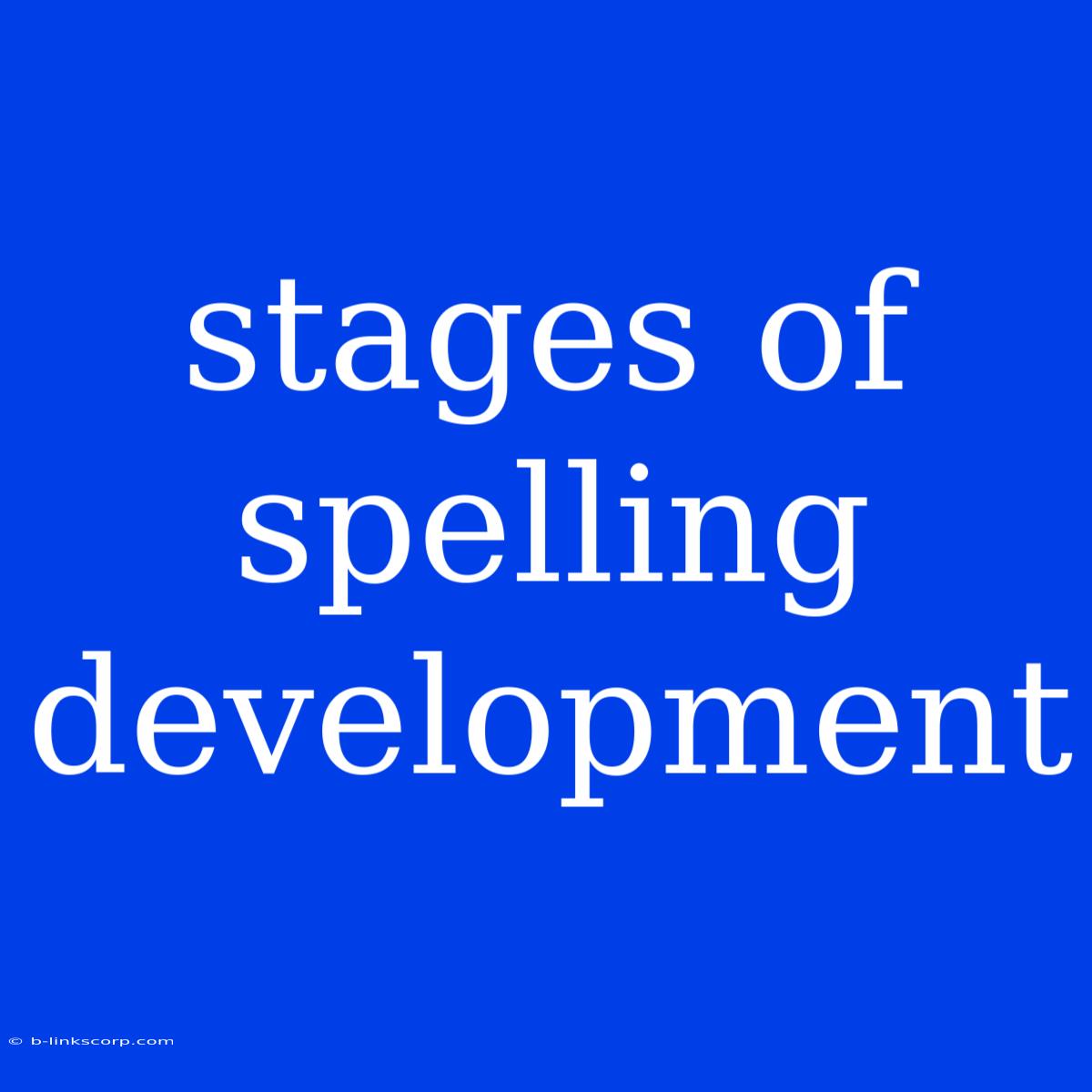Stages of Spelling Development: A Journey from Scribbles to Words
Learning to spell is a complex process that takes time and practice. Children develop their spelling skills in stages, each characterized by different levels of understanding and strategies. Understanding these stages can help parents, teachers, and educators provide appropriate support and guidance.
Stage 1: Pre-phonetic Stage (Ages 3-5)
- Characteristics: Children at this stage begin to understand the concept of writing, but they don't yet connect letters to sounds. They may scribble, draw pictures, or use random letters to represent words.
- Examples: "I wnt to pl" for "I want to play".
- Focus: Encourage children to explore writing, provide tools like pencils and paper, and read aloud to them.
Stage 2: Semi-phonetic Stage (Ages 5-6)
- Characteristics: Children start to connect some letters to their sounds and use these relationships to spell. They may overgeneralize spelling rules, leaving out letters or using incorrect ones.
- Examples: "B" for "big", "K" for "cat", "L" for "like".
- Focus: Help children understand letter-sound correspondences, encourage them to sound out words, and provide opportunities for practice.
Stage 3: Phonetic Stage (Ages 6-7)
- Characteristics: Children can now spell most words phonetically, using their knowledge of letter sounds. However, they might still struggle with silent letters and digraphs (two letters representing one sound).
- Examples: "kat" for "cat", "rite" for "write".
- Focus: Continue to reinforce letter-sound relationships, introduce digraphs and consonant blends, and encourage self-correction.
Stage 4: Transitional Stage (Ages 7-8)
- Characteristics: Children start to recognize common spelling patterns and develop a better understanding of vowel combinations. They may still make some mistakes, but they can often correct themselves.
- Examples: "sho" for "show", "rain" for "rain".
- Focus: Introduce common spelling rules and patterns, encourage dictionary use, and provide opportunities to read and write regularly.
Stage 5: Conventional Stage (Ages 8 and above)
- Characteristics: Children have a strong understanding of spelling rules, patterns, and exceptions. They can spell most words correctly and use their knowledge to analyze unfamiliar words.
- Examples: "friend", "difficult", "miscellaneous".
- Focus: Encourage continued practice and exposure to challenging words, provide opportunities to write for different purposes, and support the development of vocabulary.
Key Takeaways:
- Every child learns at their own pace. There is no set timeline for progressing through the stages.
- Encourage practice and exposure to words. Reading aloud, playing word games, and providing opportunities to write are all beneficial.
- Celebrate progress and foster a positive attitude toward spelling. Praise efforts, focus on strengths, and avoid discouraging feedback.
By understanding these stages, parents and educators can create a supportive environment that fosters a love of language and encourages children to become confident spellers.

